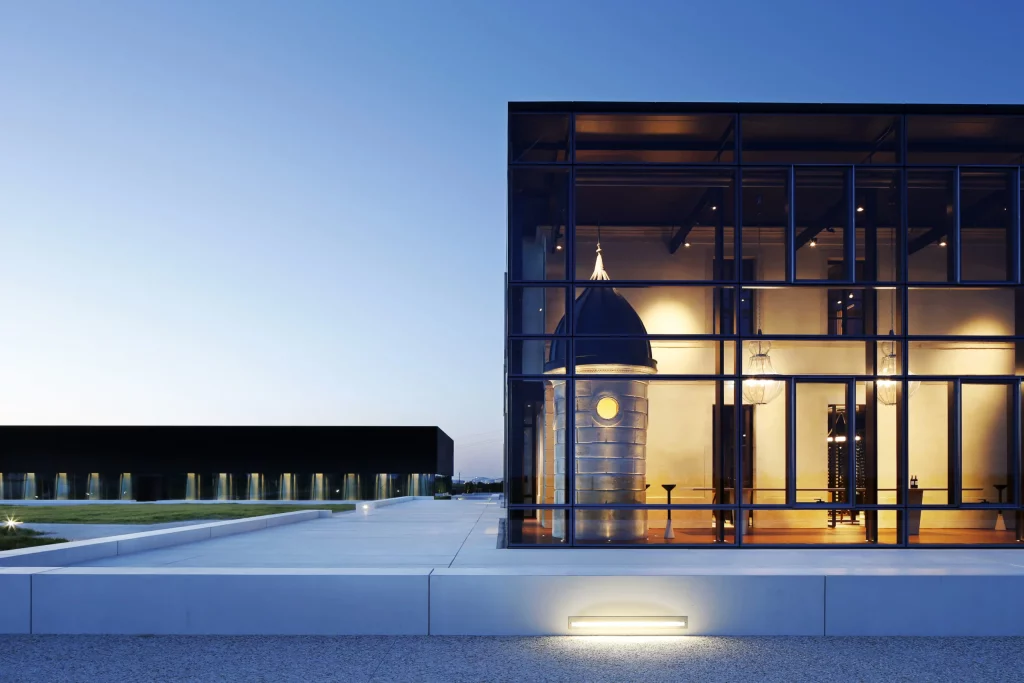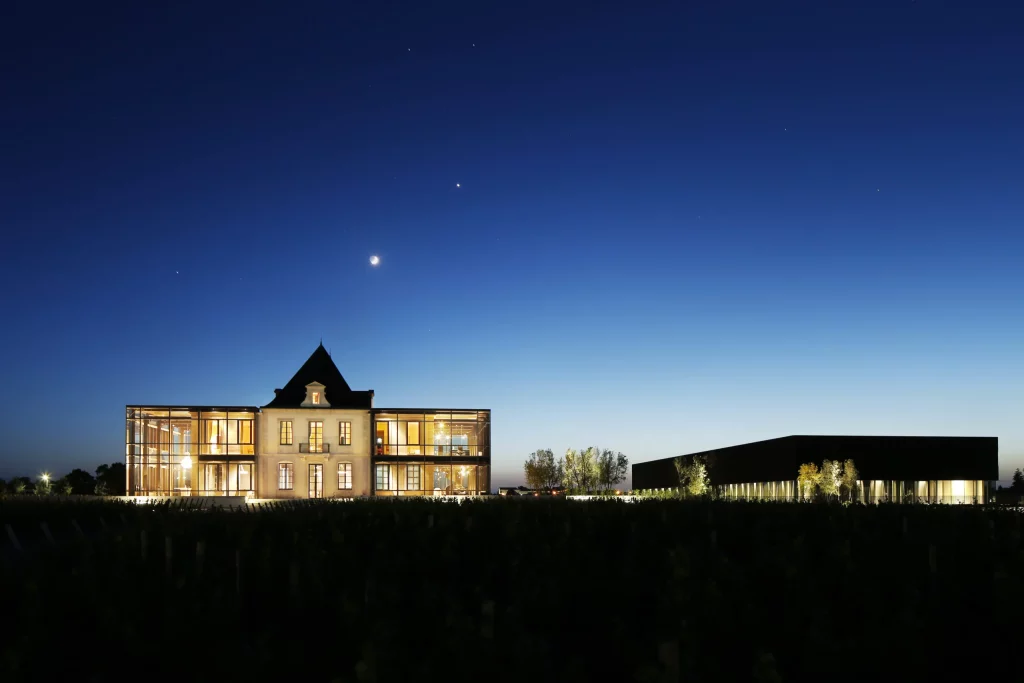This website uses cookies so that we can provide you with the best user experience possible. Cookie information is stored in your browser and performs functions such as recognising you when you return to our website and helping our team to understand which sections of the website you find most interesting and useful.
Sleeping beauty: the reawakening of Pédesclaux
Once famously disparaged by Robert Parker, Pauillac fifth growth Château Pédesclaux has been transformed under the ownership of the Lorenzetti family, thanks to canny vineyard acquisitions and ongoing ‘Cabernisation’. Richard Woodard reports.

It’s not the most obvious way to begin a presentation about a Bordeaux wine château: flashing up images of two of the most famous names in English rugby union, Owen Farrell and Stuart Lancaster. But the connection is there, and it’s topical.
Jacky Lorenzetti, the former real estate tycoon who owns Pauillac fifth growth Château Pédesclaux, is also chairman and former president of Racing 92, the Paris-based rugby club that is (at the time of writing) sitting at the top of the elite Top 14 league table. Lancaster is – since leaving Leinster last summer – the coach; Farrell, currently on sabbatical from his duties as England captain, will join Racing this summer from Saracens.
Lorenzetti took over at underachieving, second-division Racing in 2006 and bought his first Bordeaux château, Lilian Ladouys in Saint-Estèphe, in 2008. In between, he rather cannily sold the real estate business – Foncia, by then the largest in France – at the height of the property boom.
It’s fair to say that the proceeds have boosted the fortunes of Racing, of Lilian Ladouys, and of the Bordeaux properties he and wife Françoise have added since: most recently Lafon-Rochet in Saint-Estèphe, d’Issan in Margaux (owned 50/50 with the Cruse family) – and Pédesclaux in 2009.
At the time, buying Pédesclaux looked like a questionable decision. A perennial underperformer for a property of its apparent status, it was perhaps most famous as the victim of one of critic Robert Parker’s more wounding put-downs: “Life is too short,” he said, “to ever drink a Pédesclaux.”
But Lorenzetti, in the words of Augustin Lacaille, sales & communications director at Vignobles Cruze-Lorenzetti, “really wanted to to get into the ‘1855 club’”. Lacaille continues: “He was looking for, I should say, a sleeping beauty to awake.” Not so much sleeping, it’s tempting to add, as positively comatose.
Lorenzetti’s working model at Racing 92 was to achieve success by combining raw, young French talent with big-name, big-money players from outside, reputedly making All Black great Dan Carter the first player to earn more than £1m a year when he signed for Racing after the 2015 Rugby World Cup.
Much the same thinking was applied to the languishing Pédesclaux vineyard. Six hectares out of the property’s 26ha of vines at the time of acquisition were immediately replanted, and viticultural practices transformed through the use of cover crops and gradual organic and biodynamic conversion.
While the native estate was nurtured to fulfil its potential, a little star quality was injected from outside. In 2010, Lorenzetti bought 15 hectares of vineyard at Château Haut-Milon, on a plateau behind Lafite and Mouton; three years later, he acquired Château Béhèré – 5ha, 90% Cabernet Sauvignon, adjacent to Pontet-Canet. After further acquisitions, the domaine is now 52ha.
“We had to work on restructuring the vineyard, and it takes time,” explains Vincent Bache-Gabrielsen, property director at Pédesclaux, adding with a touch of diplomatic understatement: “Sometimes, the vines do not express all the potential of the terroir. The big work was to have this expression, because all the rootstocks were not fitting well with all the terroirs.

“The historical plot of Pédesclaux was not in good shape; we had to take out some vines and replant. But Haut-Milon was in better shape, so we could go a bit faster. It really helped us a lot.”
The process has included, in 2011, the digging of 100 pedological pits in the vineyards, discovering 19 soil types – the majority gravel-based, but with elements of limestone and clay. Pédesclaux’s vineyards confound the idea of a single, contiguous Bordeaux domaine, being scattered the length and breadth of Pauillac. “We are really the property that goes from north to south, with so much diversity,” agrees Bache-Gabrielsen.
Beyond improving quality, the overriding theme has been the ‘Cabernisation’ of Pédesclaux, both through replanting and vineyard acquisitions. In 2010, Cabernet Sauvignon made up only 46% of the estate; now it has reached 63%, with 27% Merlot, 7% Cabernet Franc and 3% Petit Verdot. By 2028, Cabernet Sauvignon and Franc combined will make up 77% of the vineyard.
As this implies, ‘Cabernisation’ encompasses both varieties, the aim being to achieve about 10% Cabernet Franc in the vineyard (it already accounts for 10% of the 2023 blend), thanks in part to a programme of replacing Merlot in some limestone plots.
But, while Merlot’s role has been progressively downgraded – from 47% of the blend in 2014 to 22% in 2023 – it still has a role to play, making up 34% of the assemblage in 2020 and, says Bache-Gabrielsen, bringing integration to the Cabernets in a year like 2023. “That makes us think that we won’t go to 90% Cabernet in our vineyard,” he adds. “We will need to keep some Merlot in the blend.”
You don’t transform the fortunes of an underperforming wine estate with a single bold step, but rather a combination of many diverse actions over a period of years: in the case of Pédesclaux, these have included vineyard acquisition and replanting, plus viticultural changes including organic and biodynamic conversion; Eric Boissenot being enlisted as consultant winemaker in 2013; the inauguration of the château’s eye-catching, glass-clad, gravity-fed winery, designed by Jean-Michel Wilmotte, in 2014.
The step changes are apparent in the easily perceptible evolution in wine style and character over the past decade, from the pleasantly plump 2014 to the chiselled precision of 2017 and the all-round excellence of 2019, of which Bache-Gabrielsen says: “This is what we think Pédesclaux is, and can be – the ideal blend of depth and freshness.”
There’s a lot of talk about not chasing magnitude in the wines, but freshness and acidity, harvesting ‘al dente’. Comparing 2017 to 2014, Bache-Gabrielsen says: “Even if it’s less dense than 2014, then for us it’s reflecting what is Pauillac and what is Pédesclaux. That was a big step for us.” He has high hopes for 2022, which is due to be bottled in June.
In the end, the overriding feeling is one of considerable – and, in wine terms, relatively rapid – progress having been made since the Lorenzettis acquired Pédesclaux 15 years ago. Whether or not Robert Parker is familiar with rugby analogies, it’s fair to say that, while the château may not exactly be emulating Racing 92 by heading the Top 14 league table – it’s certainly not battling against relegation any more either.


